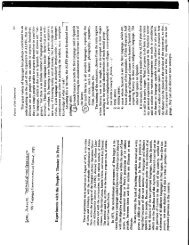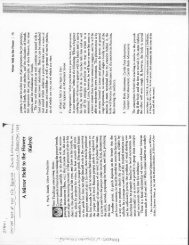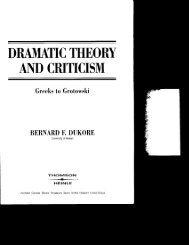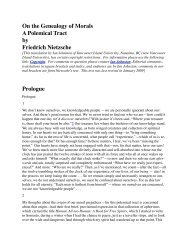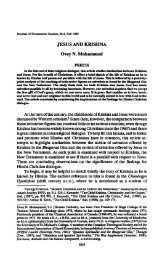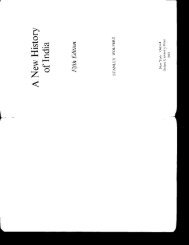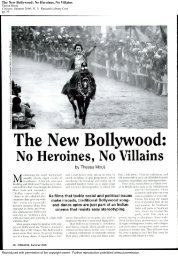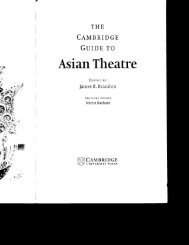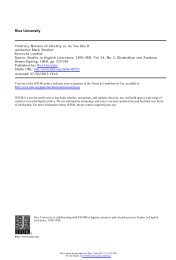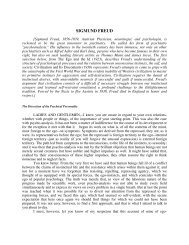Topeng Sidha Karya: A Balinese Mask Dance - Yavanika
Topeng Sidha Karya: A Balinese Mask Dance - Yavanika
Topeng Sidha Karya: A Balinese Mask Dance - Yavanika
- No tags were found...
You also want an ePaper? Increase the reach of your titles
YUMPU automatically turns print PDFs into web optimized ePapers that Google loves.
174 Kodi et al.island, close to the sea from which turbulence and illness are thoughtto rise. As Michel Picard in Bali: Cultural Tourism and Touristic Culturenoted, “Kuta is in the lowlands on the coast, downstream toward thesea (kelod), associated with demons and pollution. In the cosmic perspective,it is appropriate that the tourists—who like the demons, areperceived as stupid, red-faced, hairy, and crude—are for the most partinstalled by the sea” (1996: 89). The <strong>Sidha</strong> <strong>Karya</strong> character, and all theoutsiders, traders, and tourists who come to the island, are forces thatwork on the cultural and ritual life of the island, which is largely livedout in temples, courts, and villages that rise on the volcanic slopesabove.The play, as presented here, is an examination of outsider anddisrupting forces, represented by <strong>Sidha</strong> <strong>Karya</strong>. These are forces thatcontemporary <strong>Balinese</strong> must deal with to realign their culture, even asthey are traumatized by the withdrawal of tourist dollars in the aftermathof the bomb. The blast forced <strong>Balinese</strong> to question the easyingress that the Javanese terrorists had to the island, and many soughtto reexamine the political decisions that left the island vulnerable.The <strong>Balinese</strong> border could not be closed because Bali is a part of theRepublic of Indonesia, but as a Hindu island in a nation that is 95 percentIslamic, they were targeted by Islamic fundamentalists. The performerraised the question of the future: should Bali push for separationfrom the republic, joining other separatist movements in Acehand Papua? Such an idea is sometimes aired in Bali; however, the performershere pass quickly from the political situation to the larger issuethat the attack represents—a metaphysical failure. The outside forcethat encroaches on Bali cannot simply be dismissed as demonic andexternal. It needs to be understood as linked to core <strong>Balinese</strong> values.The Kingdom of Gegel, ruled by Watu Renggong and with Besakih,the Mother Temple, represents the <strong>Balinese</strong> inner core. This areais high on the slopes of Gunung Agung, the great volcano that is theaxis of the island. Kaja-kelod (mountain-sea) directionality informs <strong>Balinese</strong>thinking, village layout, architecture, and performance. WatuRenggong, with his refined face, chiseled teeth, and mountain abode,is clearly the divine ancestor. He dances in a refined style and is theforbearer of all the <strong>Balinese</strong> kings, but his power is limited. <strong>Sidha</strong><strong>Karya</strong>, with his big eyes, grinning face, and fangs, has sea and shoreconnections. He dances in rough style and is said to come fromKeling, which may be Madura, Java, or even Eastern India, accordingto which version of the story you follow. His less socialized ways arepotent and must be both appreciated and placated.In this dichotomization of insider <strong>Balinese</strong> and outsider fromover the seas, we see an iteration of the <strong>Balinese</strong> concept of rwu



